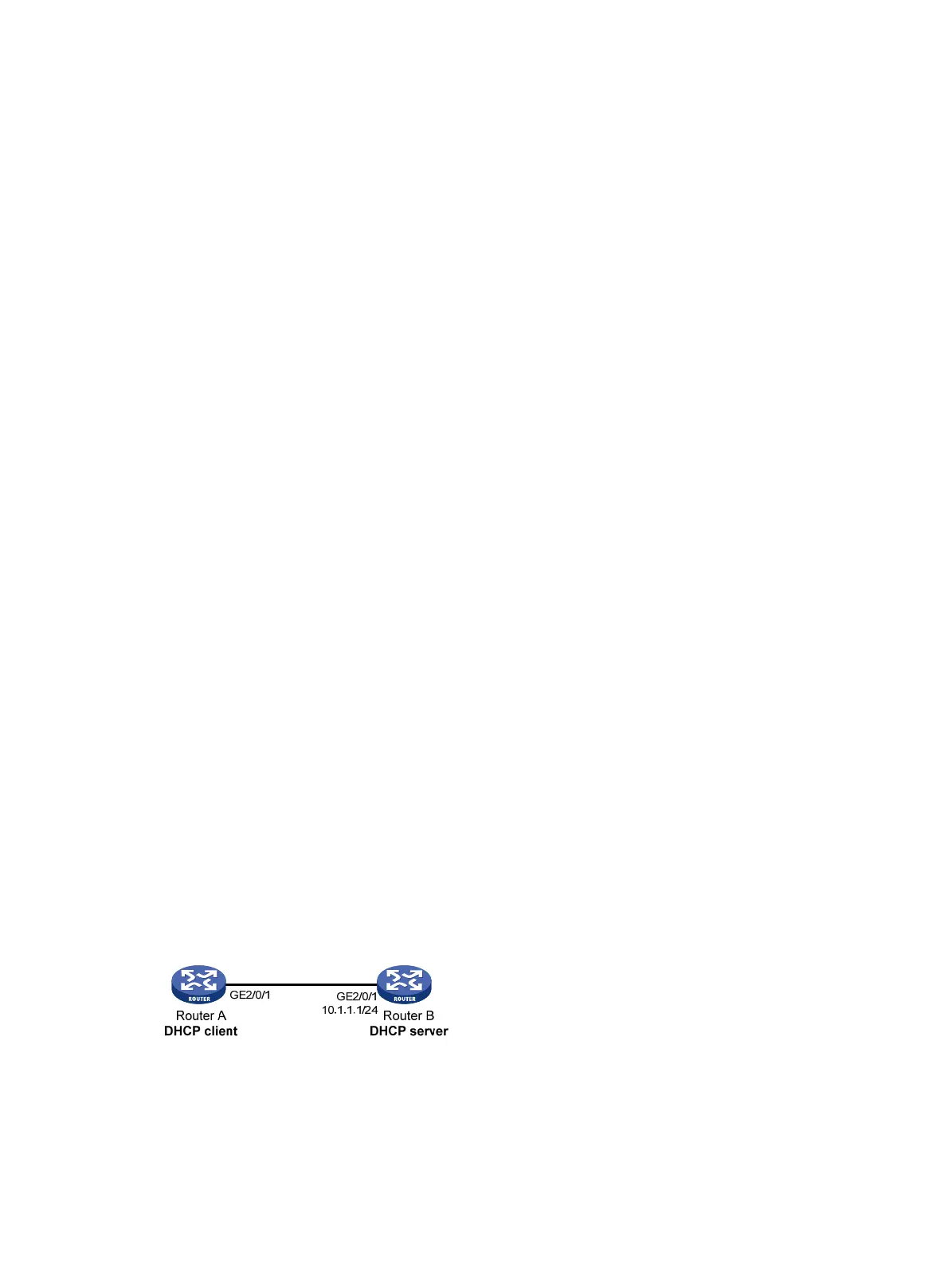61
[RouterB-GigabitEthernet2/0/1] quit
# Create DHCP user class tt and configure a match rule to match DHCP requests that contain
Option 82.
[RouterB] dhcp class tt
[RouterB-dhcp-class-tt] if-match rule 1 option 82
[RouterB-dhcp-class-tt] quit
# Create DHCP user class ss and configure a match rule to match DHCP requests in which the
hardware address is six bytes long and begins with aabb-aabb-aab.
[RouterB] dhcp class ss
[RouterB-dhcp-class-ss] if-match rule 1 hardware-address aabb-aabb-aab0 mask
ffff-ffff-fff0
[RouterB-dhcp-class-ss] quit
# Create DHCP address pool aa.
[RouterB] dhcp server ip-pool aa
# Specify the subnet for dynamic allocation.
[RouterB-dhcp-pool-aa] network 10.10.1.0 mask 255.255.255.0
# Specify the address range for dynamic allocation.
[RouterB-dhcp-pool-aa] address range 10.10.1.2 10.10.1.100
# Specify the address range for the user class tt.
[RouterB-dhcp-pool-aa] class tt range 10.10.1.2 10.10.1.10
# Specify the address range for the user class ss.
[RouterB-dhcp-pool-aa] class ss range 10.10.1.11 10.10.1.26
# Specify the gateway and the DNS server.
[RouterB-dhcp-pool-aa] gateway-list 10.10.1.254
[RouterB-dhcp-pool-aa] dns-list 10.10.1.20
Verifying the configuration
# Verify that clients matching the DHCP user classes can obtain IP addresses in the specified ranges
and all other configuration parameters from the DHCP server. (Details not shown.)
# On the DHCP server, display the IP addresses assigned to the clients.
[RouterB] display dhcp server ip-in-use
DHCP user class whitelist configuration example
Network requirements
As shown in Figure 27, configure the DHCP user class whitelist to allow the DHCP server to assign
IP addresses to clients whose hardware addresses are six bytes long and begin with aabb-aabb.
Figure 27 Network diagram
Configuration procedure
1. Specify IP addresses for the interfaces on the DHCP server. (Details not shown.)
2. Configure DHCP:
# Enable DHCP.
